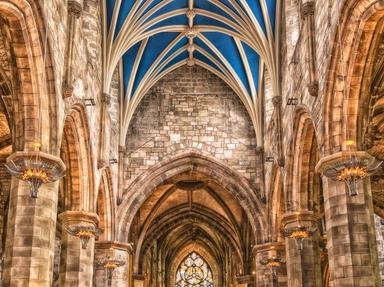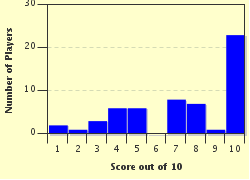Quiz Answer Key and Fun Facts
1. In a former market square: associated with the acting profession.
2. In Cheapside: its bells traditionally define a Cockney.
3. In Fleet Street: known for its "wedding cake" spire.
4. In the Tower of London: contains the graves of two wives of Henry VIII.
5. In Trafalgar Square: original home of a chamber orchestra.
6. The parish church of the House of Commons.
7. In the Strand: associated with the Royal Air Force.
8. War-damaged church in Westminster, restored and used as a concert hall.
9. Round church in a lawyers' enclave in the City.
10. Diagonally opposite the Old Bailey; once played a part in executions.
Source: Author
TabbyTom
This quiz was reviewed by FunTrivia editor
stedman before going online.
Any errors found in FunTrivia content are routinely corrected through our feedback system.

